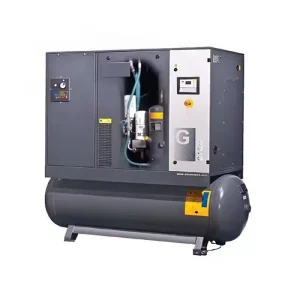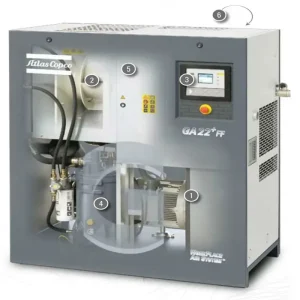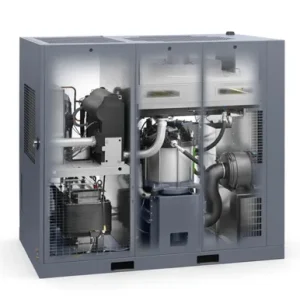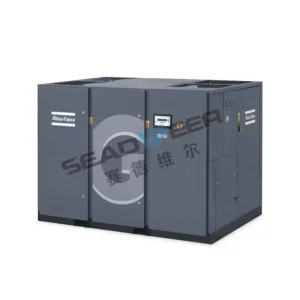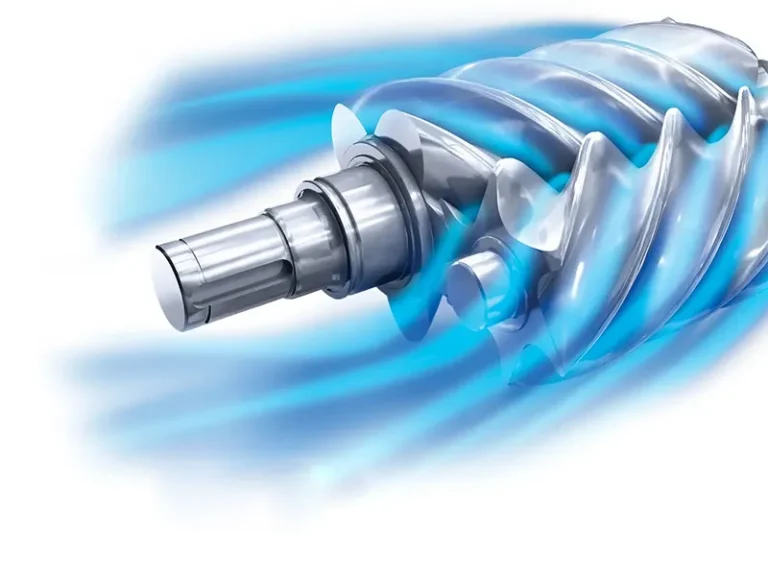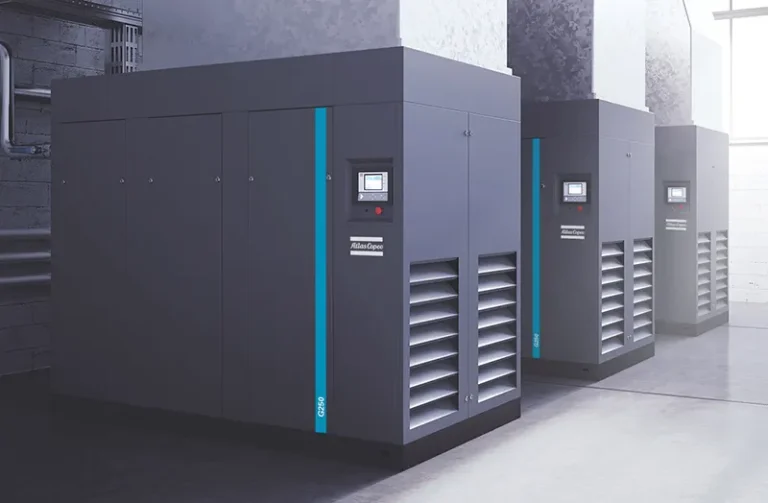In modern industrial production, compressed air, as a crucial power source, is widely used across various industries. The air compressor, serving as the equipment to generate compressed air, directly impacts production efficiency and product quality through its performance. This article provides a detailed introduction to the principles, structure, features, applications, and future development trends of Atlas Copco oil-free screw air compressors.
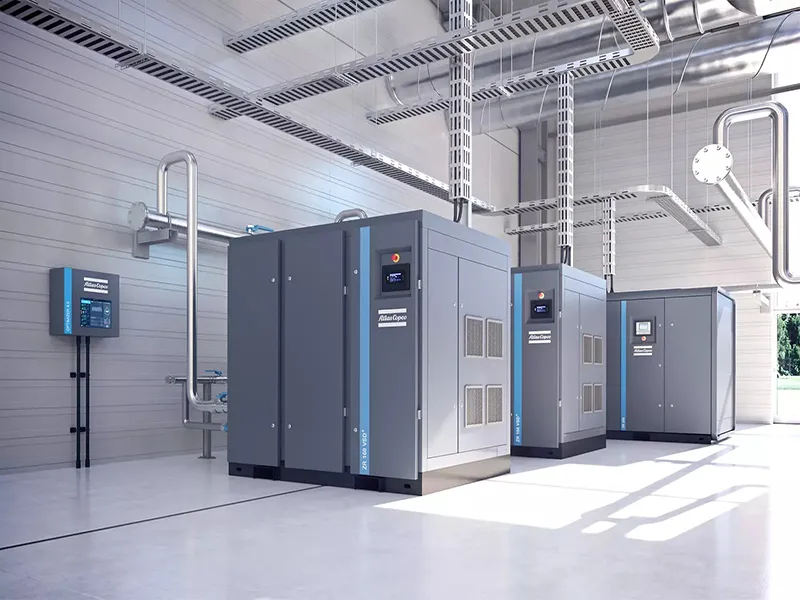
Contents
- 1 I. Basic Principles of Atlas Copco Oil-Free Screw Air Compressors
- 2 II. Structure of Atlas Copco Oil-Free Screw Air Compressors
- 3 III. Features of Atlas Copco Oil-Free Screw Air Compressors
- 4 IV. Applications of Atlas Copco Oil-Free Screw Air Compressors
- 5 V. Future Trends of Atlas Copco Oil-Free Screw Air Compressors
- 6 Related Products
I. Basic Principles of Atlas Copco Oil-Free Screw Air Compressors
An oil-free screw air compressor is a device that compresses air through the rotation of screw rotors. Its working principle is based on positive displacement compression, where gas compression is achieved by altering the volume of the working chamber. Specifically, the oil-free air compressor primarily consists of a pair of intermeshing screw rotors, a housing, an air intake, an exhaust port, and other components.
- Working Process:
- Intake Process: Air enters the compressor through an intake filter. Under the rotation of the screw rotors, air is drawn into the space between the rotors.
- Compression Process: As the rotors rotate, the trapped air is gradually compressed by the screw profiles, reducing its volume and increasing pressure.
- Exhaust Process: The compressed air is pushed toward the exhaust port and discharged through the exhaust pipeline.
- Oil-Free Feature:
The term “oil-free” refers to the absence of lubricating oil in the compression chamber for lubrication or sealing. Instead, special materials and coatings are used to minimize friction and wear. This ensures the compressed air is free of oil, eliminating contamination risks in downstream processes and products.
II. Structure of Atlas Copco Oil-Free Screw Air Compressors
The structure of an oil-free screw air compressor includes the following key components:
- Screw Rotors:
The core components of the compressor, typically a pair of intermeshing helical rotors. The material and machining precision of the rotors directly affect performance and lifespan. - Housing:
A container made of cast iron or aluminum alloy that houses the rotors and compressed air. The design must account for heat dissipation and noise control. - Bearings and Seals:
Bearings support and position the rotors to ensure smooth rotation, while seals prevent air leakage and contamination. - Cooling System:
Utilizes air-cooled or water-cooled systems. Air cooling relies on fans and heat sinks, while water cooling uses circulating water to remove heat. - Lubrication System:
Although no oil is used in the compression chamber, bearings and other moving parts still require lubrication. A dedicated oil circulation system ensures smooth operation. - Control System:
Modern compressors feature advanced control systems for automated start/stop, pressure regulation, fault alarms, and more. These systems are critical for efficient and safe operation.
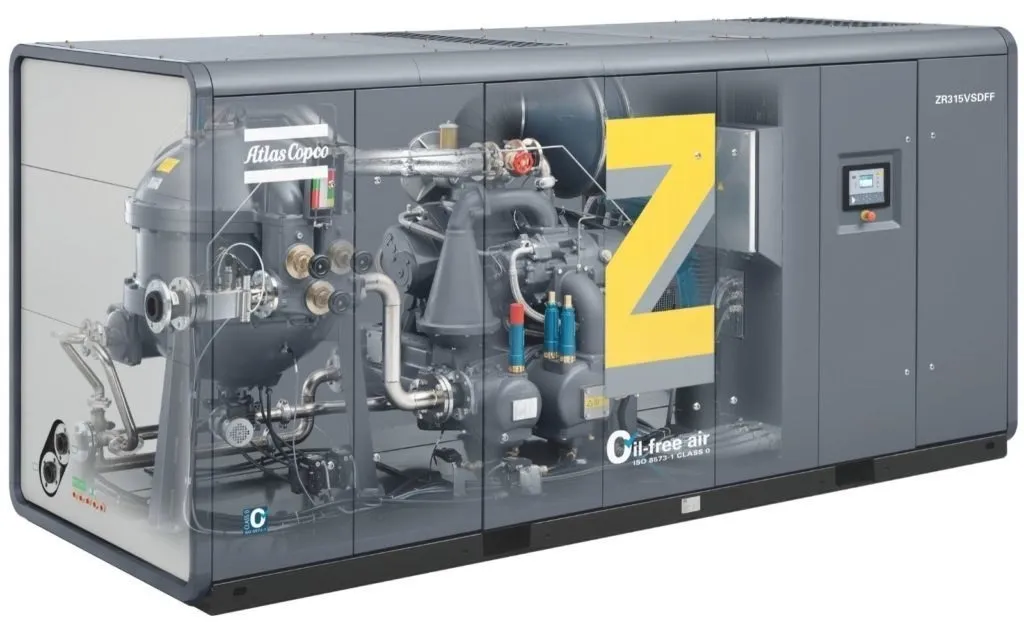
III. Features of Atlas Copco Oil-Free Screw Air Compressors
- High Efficiency and Energy Savings:
Advanced rotor designs and high-efficiency motors enable stable air supply with low energy consumption. Compared to traditional piston compressors, screw compressors offer superior energy efficiency. Additionally, oil-free screw compressors often adopt two-stage compression to reduce single-stage compression ratios, further enhancing efficiency. - Stability and Reliability:
Simple structure, fewer moving parts, low failure rates, and long service life make these compressors ideal for industrial applications, with reduced maintenance costs. - Clean and Oil-Free:
The absence of oil in compressed air eliminates contamination risks, making these compressors essential for industries with stringent air quality requirements, such as food, pharmaceuticals, and electronics.
IV. Applications of Atlas Copco Oil-Free Screw Air Compressors
Oil-free screw air compressors are widely used in the following industries due to their efficiency, cleanliness, and reliability:
- Food and Beverage:
Compressed air directly contacts products, requiring oil-free air to ensure safety and quality. - Pharmaceuticals:
Strict cleanliness standards (e.g., GMP compliance) are met for drug production. - Electronics:
Oil-free air prevents contamination in processes like cleaning, drying, and cooling. - Textiles:
Stable air supply ensures continuous production and quality in fiber handling, weaving, and dyeing. - Chemicals:
Reliable operation supports material transfer, mixing, and reactions.
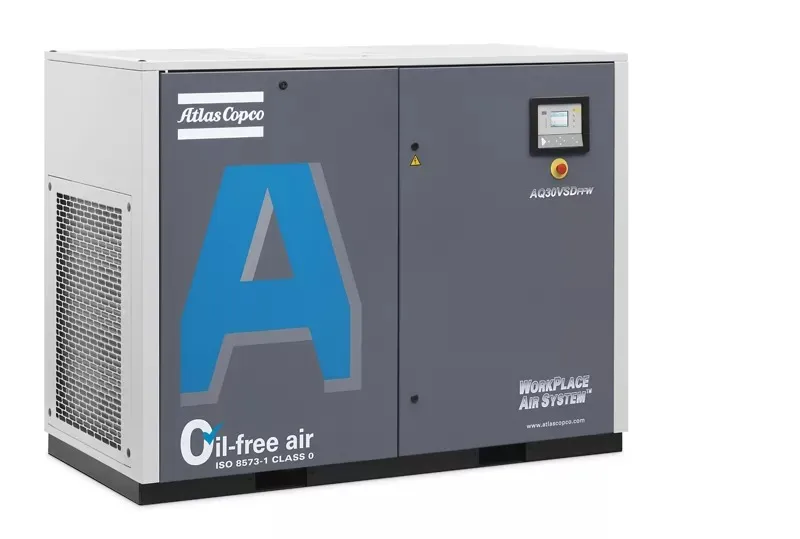
V. Future Trends of Atlas Copco Oil-Free Screw Air Compressors
- Smart Technology:
Integration with Industry 4.0 will enable advanced sensors and control systems for remote monitoring, fault diagnosis, and predictive maintenance. - Energy Efficiency and Sustainability:
Adoption of high-efficiency motors and advanced cooling technologies to reduce energy consumption and noise. - Modular Design:
Enhanced flexibility and maintainability through modular components, allowing customization and upgrades. - New Materials and Processes:
Use of composites and coatings to reduce friction, improve durability, and extend lifespan.
As a high-efficiency, clean, and reliable compressed air solution, Atlas Copco oil-free screw air compressors play a vital role in modern industry. With technological advancements and evolving market demands, they will continue to evolve toward smarter, greener, and more modular designs. For businesses, selecting the right oil-free compressor not only boosts productivity but also ensures product quality and lowers operational costs. This article aims to enhance your understanding of oil-free screw air compressors and support informed decision-making for your production needs.
Related Products
-
Atlas Copco Air Compressor G-Series
$8,000.00 – $10,000.00 -
Atlas Copco Air Compressor GA11+ – 30 FF
$880.00 – $1,800.00 -
Atlas Copco Air Compressor GA110VSD
$6,800.00 – $10,000.00 -
Atlas Copco Air Compressor GA132
$6,800.00 – $10,000.00

